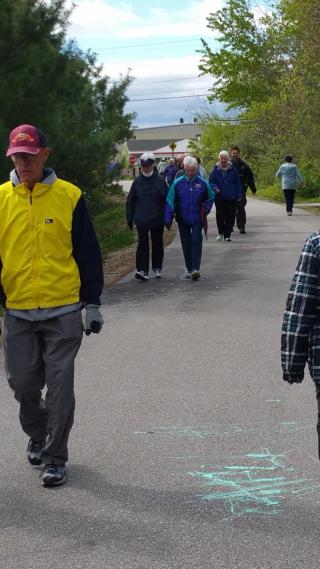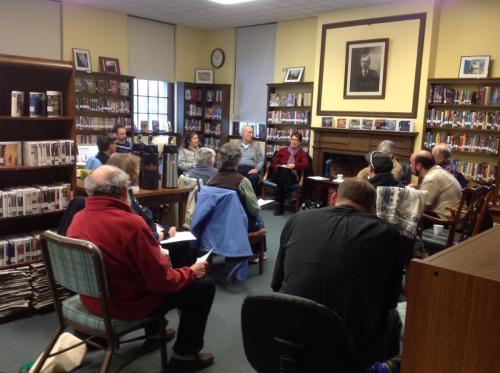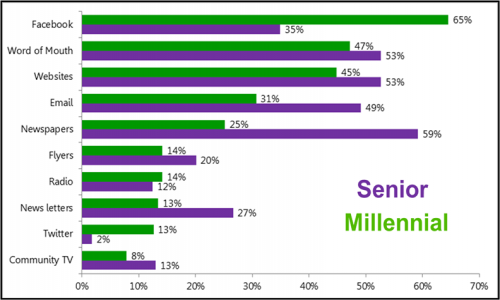Creating an Age-Friendly Community

How To Create an Age-Friendly Community:
What would an Age-Friendly Community look like, what sort of services would be available, and how would residents of all ages be able to enjoy their community to its fullest? These are the questions you might ask as you begin to consider your journey in how you can build an age-friendly community.
The following sections serve to provide an overview and thoughtful steps in the process of creating an Age-Friendly Community.
What is an Age-Friendly Community?
Despite working in the Age-Friendly arena for four years we are no experts, but we have learned a few things. What we have witnessed is that an Age-Friendly Community creates a myriad of connections for people of all ages and abilities, lays the foundation for Age-Friendly plans, strategies, and regulations, and supports community champions that support Age-Friendly programs.
For SNHPC, the term “Age-Friendly” recognizes the needs for people of all ages but gives special consideration to New Hampshire’s growing senior population and declining young adult population. An Age-Friendly community may look different depending on the size of the community and the amount of resources available.
For a rural community, it may mean that a volunteer driver program provides transportation to seniors who can no longer drive. Age-friendly housing elements could mean that local zoning ordinances allow shared housing so that a senior may live with his/her caretaker. To reduce the pitfalls of loneliness, a rural age-friendly community might utilize their local library in unique ways, creating robust multi-generational and age-specific engagement programs.
In a larger community, Age-Friendly may mean having accessible and well-lit sidewalks, a local senior or community center where multiple services and engagement activities are available, having accessible and convenient health care services, and being able to enjoy a healthy economic center that provides employment opportunities for people of all ages.
AARP, through their Livable Communities program, identified “Eight Domains of Livability” which provides a framework for what defines an Age-Friendly Community. While these domains largely cater to older adults, there are many similarities between the needs of older adults and younger generations.
How to Get Started:
Whether you are a concerned resident or a local decision-maker, there are many ways in which you can begin the processes of making your community Age-Friendly. To make a lasting impact, the best strategy is to include community stakeholders in the process. These stakeholders might include residents but also representatives from a local volunteer group or club, municipal government or staff, local or regional organizations, and business owners. A diverse stakeholder group will ensure the process has a robust framework to sustain an Age-Friendly planning effort.
Once a group of stakeholders has been identified, establish a leadership team or task force to ensure accountability for the process. The task force will lead the larger stakeholder group through priority planning, establishment of goals, encourage/delegate tasks, and oversee the process.
Key Age-Friendly Community Tool – The Community Assessment
One of the first tasks required is an assessment of the community – identifying local strengths, opportunities, and barriers to becoming an Age-Friendly community. Age-Friendly assessment elements may vary depending on the community’s priorities but may include: transportation, housing, recreation and engagement, and senior services.

A Community Assessment will help a stakeholder group identify the existing services and conditions, understand the limitations as well as opportunities, and begin to recognize the future needs of a community. The assessment should include, but not be limited to the following:
- Review existing services in town – what services exist and who are they serving? Are their services for every age group? Also identify ways in which residents receive information: newsletters, bulletin boards, websites, Facebook and other social networks, club meetings, library or community center gatherings. (Look here for examples of assessment worksheets)
- Review existing planning efforts in town and what’s in the pipeline – it may be that the municipality or a local organization is already planning new infrastructure or services for their residents.
- Conduct a community-wide survey to identify local concerns about aging. A survey will help identify local demographics as well as residents' needs and ideas for projects that will help make the community Age-Friendly. Click here for an example of our Age-Friendly Library Survey.
- Hold public focus groups. These provide opportunities for community discussion, and can help strengthen and define specific planning focus areas.
- Create Community Partners. Libraries, Parks and Recreation Departments, Police and Fire Departments, Historical Societies, Planning Boards, trail committees, business groups, and others may already have programs geared toward seniors, or multi-generation families. Finding partners and coordinating efforts is a key toward a successful Age-Friendly program.
Communication: One of the most important steps in the assessment process is keeping the community informed of the process. Understanding how residents receive information is vital to the success of the Age-Friendly assessment and program. For example, in publicizing an event or survey it is important to provide multiple opportunities for people to participate in the Age-Friendly planning process. A community survey should be made available in both online and physical formats to reach as many people as possible. Partnering with the library, parks and recreation departments, post offices, community centers, and popular businesses will widen the reach. Links to events and surveys should be publicized on municipal and local organization websites, posted in public spaces, and should be accessible on local library computers for those without computers at home.

Outcomes: Once surveys, community assessments, and/or focus groups have been conducted, a summary report of the findings should be completed and made publicly available both on local websites and in a physical format in public spaces for viewing. The report should also be presented to local-decision makers to inform them of the findings.
The assessment can now be used as a tool to inform a community plan – such as a Master Plan, or an Age-Friendly action plan – so that future decisions are based on the findings of the community assessment.
For an example of a community assessment format, please find SNHPC’s local community assessment document here.
What Comes Next – Age-Friendly Action Plan:
An Age-Friendly Action Plan is a guiding document that provides the needed goals, objectives, strategies, and priorities in creating an Age-Friendly community. The community assessment is the perfect tool to guide the work as assets, limitations, and opportunities are identified in critical areas such as transportation, housing, and recreation and engagement. Community stakeholders will need such a tool to outline a clear path in developing an Age-Friendly Action Plan that ensures residents of all ages will thrive in the community.
An action plan can take many forms and can be brief or comprehensive. Regardless of its breadth, an action plan should include the following:
- Letter of support from local decision-making body and authority to develop the plan.
- A community profile including the Age-Friendly assessment results.
- Information about the plan’s process and about those involved.
- The action plan categories including goals, objectives, and specific recommendations for each focus area such as housing, transportation, engagement, and services.
- Plan priorities and how they were chosen.
- Accountability, delegation of tasks, and implementation outline.
- Funding needs and resources (Partnerships, grants, etc)
- Coordination with other community efforts (Master Plan, Capital Improvement Program, Library Strategic Services Plan, Departmental Missions)
The Age-Friendly Action Plan provides a base for decision-makers to act on the findings of the assessment. For instance, an action plan might inform a municipality’s Capital Improvement Program, where short-term large capital expenditures are planned, such as building a community center, creating pedestrian and bicycle infrastructure, or purchasing a van for community trips and for providing rides to seniors, vets, and disabled. Additionally, the action plan can be used to supplement the case for projects seeking funding outside of the municipal budget. For example, if the community assessment and action plan identified a need for a bicycle and pedestrian trail, it may be eligible for various funding sources, such as state and federal transportation programs. These programs typically require supporting documentation of the need for such projects, and an adopted Age-Friendly action plan will strengthen the project’s application for state or federal funding.
For more information on how to kick-start your community’s Age-Friendly planning effort, please explore the SNHPC Becoming Age-Friendly web pages and resource links.
Conduct an Age-Friendly Pilot Program
Age-Friendly pilot programs are a great way for a community to introduce the concept of Age-Friendly planning. As a stakeholder, you may want to build awareness about Age-Friendly initiatives; if this is the case, one way to act on the findings of any Age-Friendly effort is to conduct a pilot project or a short-term, temporary project that highlights the benefits of investing in a long-term policy or project.
A pilot project should focus on tangible issues with manageable goals that will require little if any municipal funding but encourage an investment of staff time and partnership building. A pilot project often utilizes local volunteers and organizations who will donate their time and resources to establish a short-term, temporary project.
The following outlines the necessary steps for a community to identify what type of pilot project will best suit their needs.
- Identify the community appointee to take a leadership position for the Pilot Program
(This individual will be the community’s contact and will work alongside a local or regional organization to hold meetings, provide input, review and help develop a strategic action plan, among other work. This individual could be municipal staff or a local volunteer dedicated to working on the Pilot Program.)
- Identify areas of the Community Assessment which will be the focus for the Pilot Program. (What opportunities or barriers might your community want to address? Has the issue been identified during the community assessment phase?)
- Identify partnerships that will aid in the success of the pilot program. (Identify potential partners that may play an important role in the pilot program. Building relationships with businesses, agencies, departments, residents, and others will provide input on a collective approach to organizing the pilot program, add to the outreach, and ensure the success of the project.)
- Identify how the municipality might utilize this Pilot Program for future community planning and/or decision-making. (Would the community use the work completed during the Pilot Program for future Master Plan updates, to inform the community’s CIP, etc.)
The following are examples of pilot program options:
- Conduct a survey to supplement a Master Plan update
- Conduct outreach on existing local transit services
- Conduct a survey to identify if transit is needed in the community
- Work with community members, stakeholders, and the municipality to create Age-Friendly housing regulations
- Work with local libraries to identify new programming that would meet the needs of older and younger populations
- Work with local senior organizations to identify new volunteer opportunities

